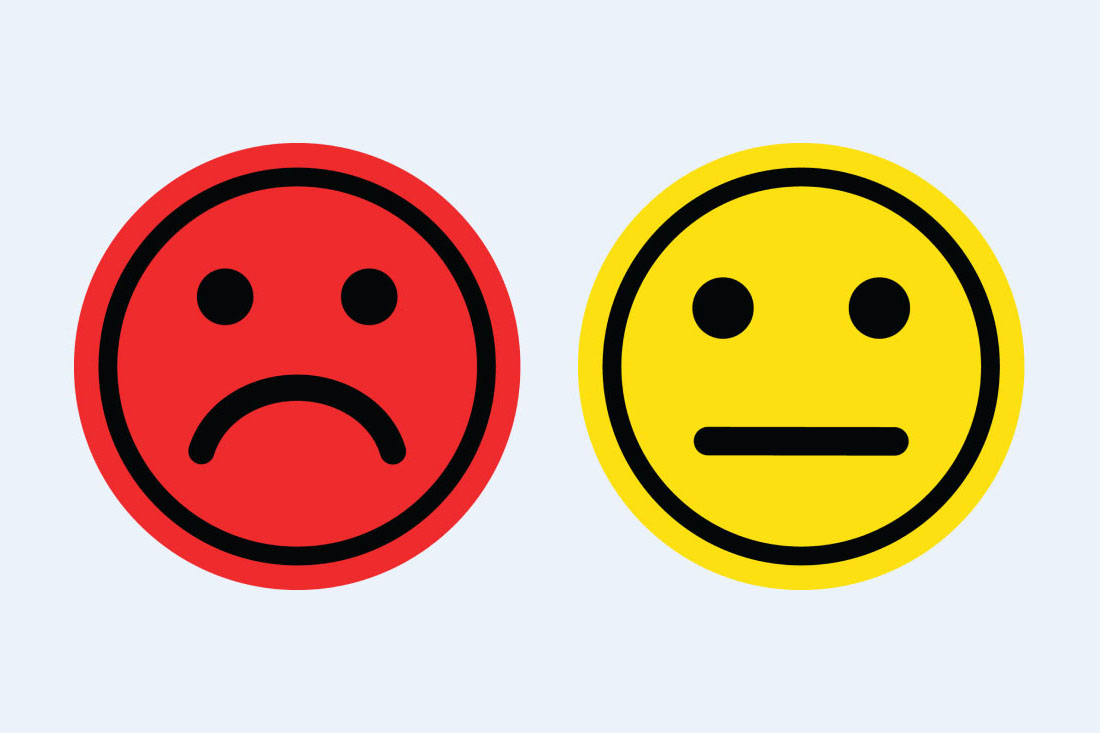It’s no secret fostering employee engagement is critical for success. After all, engaged employees are more likely to stay motivated, productive and loyal. And watching for signs of disengagement allows you to keep people on that path.
However, there are distinct differences between employees who become disengaged and those who are simply unengaged. Before you can create a more productive, positive work environment, it’s crucial to understand them.
What is an unengaged employee?
An unengaged employee is someone who lacks motivation and enthusiasm. Instead of feeling invested in their work and the company mission, they show up primarily to collect a paycheck. They stop going the extra mile and do the bare minimum to get by. While unengaged employees don’t experience strong feelings of resentment or discontentment, they’re often bored and may feel their work is mindless. If no one steps in to help, an unengaged employee is likely to become a disengaged employee over time.
What is a disengaged employee?
A disengaged employee is someone who’s gone beyond boredom to experience high levels of resentment, unhappiness and dissatisfaction. They often feel stuck in their careers due to limited professional development opportunities, a toxic company culture and lack of recognition. They may be burned out from excessive workloads or frustrated from repeatedly poor communication from managers and leaders. Their negative attitude impacts team members as they become increasingly indifferent to — or even hostile toward — the organization.
Why are unengaged employees bad for business?
While highly engaged employees contribute to greater profitability and productivity, unengaged workers do the opposite. Whether employees are moderately detached or have progressed through all five stages of disengagement, a lack of engagement poses serious risks.
According to Gallup’s latest State of the Global Workplace report, low engagement costs the world a whopping $8.9 trillion. And unfortunately, no business is immune — the problem persists across industries and markets, from small businesses to global enterprises. Just 23% of employees are fully engaged at work. The rest are unengaged or actively disengaged, causing a cascade of negative impacts — whether you’re aware of them or not.
First and foremost, actively disengaged employees are expensive. Employees who are not engaged cost companies the equivalent of 18% of their annual salaries, or $18,000 for someone making $100,000 a year not including benefits.
The longer people remain unengaged, the more serious the consequences. Research has long shown a connection between disengaged employees and various losses. Disengaged workers have 60% more errors, 49% more accidents and 37% higher absenteeism. In addition, organizations with low employee engagement scores experience 18% lower productivity, 16% lower profitability and 37% less job growth.
Key differences in unengaged vs. disengaged employees
While unengaged and disengaged employees share some characteristics, several key differences define each.
1. Productivity and quality of work
While unengaged workers may not take pride in their work, they get the job done. They don’t beat deadlines or exceed goals but still deliver work on time and meet baseline expectations. In contrast, disengaged employees deliver subpar work, withdraw from team discussions and are unwilling to prioritize organizational goals above their own needs.
2. Morale and communication
Unengaged employees often appear no different from the outside. They stay quiet or even convey positivity when talking with peers, and may only exhibit signs of low engagement in surveys and feedback tools. Disengaged employees shut the door to open communication altogether. When they are vocal, it’s to complain about leadership and share dissatisfaction with their role and responsibilities.
3. Unplanned absences and lateness
While unengaged employees may have less energy, they still show up to work. But disengaged employees are habitually late, leave early, take long lunch breaks and frequently call in sick — usually without advance warning. They create significant gaps that disrupt workflows and increase the burden on fellow team members.
4. Career development and skills
An unengaged employee may not feel motivated to go above and beyond in day-to-day work, but they’re still interested in upward growth. In fact, they might rush through assignments for that very reason — to spend more time on training courses and certifications that will help them land another role with the company. But a disengaged employee has no interest in building new skills or developing their career. They have one foot out the door and are just hanging on until they find a way out.
It’s also important to note that low engagement is often temporary and simple to fix. The sooner you catch it, the better positioned you’ll be to turn things around before someone spirals into longer-term disengagement. And while some causes of disengagement are beyond your control, such as personal issues or health problems, most are reversible.
5. Collaboration and team dynamics
Unengaged employees typically go through the motions in team settings. They attend meetings, respond when asked and contribute just enough to stay under the radar. While they’re not disruptive, they rarely take initiative or push ideas forward.
Disengaged employees, however, often resist collaboration altogether. They may voice complaints during group discussions, ignore shared goals or create friction that slows down team progress. In both cases, a lack of engagement weakens overall team performance.
6. Use of workplace tools and technology
Unengaged employees stick to the tools they know and rarely explore new features or adopt optional platforms. They complete tasks but don’t take full advantage of available resources.
Disengaged employees, on the other hand, go further, neglecting or actively avoiding key systems. They may ignore updates, skip process requirements or rely on workarounds that create risk. These behaviors can signal deeper dissatisfaction and often show up clearly in workforce analytics data.
Support unengaged and disengaged employees with ActivTrak
Understanding the key differences between disengaged and unengaged employees is crucial for addressing issues effectively.
Understanding the key differences between disengaged and unengaged employees is crucial for addressing issues effectively. The table below outlines the main differences to help you identify each group and take the right action.
| Unengaged Employees | Disengaged Employees | |
|---|---|---|
| Productivity & Quality | Meet basic expectations but don’t exceed them | Deliver low-quality work and deprioritize goals |
| Morale & Communication | Quiet or neutral in tone, often go unnoticed | Vocal dissatisfaction and negativity toward leadership |
| Attendance Patterns | Show up regularly but lack energy | Frequently absent, late or disengaged during work hours |
| Career Development | Interested in growth but not fully motivated | Uninterested in learning or advancement |
| Team Collaboration | Participate passively in team settings | Resist collaboration, create friction within the group |
| Tool & Tech Usage | Use required tools with minimal initiative | Avoid or misuse systems, creating risk or inefficiency |
Put simply: Unengagement stems from a lack of passion and personal investment in work. Disengagement involves more serious negative behaviors and a lack of alignment with company goals. Both impact productivity. And, more importantly, both are treatable.
If you’re looking for an easy, effective way to spot the signs of unengaged and disengaged employees within your workforce, ActivTrak is the way to go. More than 9,500 organizations use our employee engagement software to:
- Assess burnout risk
- Detect quiet quitting
- Understand employee well-being
- Ensure healthy workload balance
Get a demo to learn how collecting and analyzing workforce data empowers you to identify and address engagement issues long before they spiral out of control.





